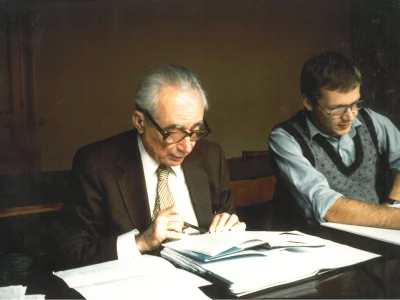By Torkil Lauesen
Review of: Immanuel Ness, Migration as Economic Imperialism: How International Labour Mobility Undermines Economic Development in Poor Countries (Cambridge: Polity Press, 2023), 272 pages, $26.95, paperback.
Patterns of migrations have shifted during the history of capitalism through the changing international divisions of labor. Poverty and the longing for a better life have driven immigration in a polarized world-system. This process has been facilitated by the development of transportation and communication, and hampered by the existence of borders. It has drawn in peasants, skilled and unskilled workers, and a brain drain of educated experts, all with the purpose of optimizing capital accumulation. The modern growth of international labor migration coincided with the emergence of neoliberalism in the mid-1970s and the globalization of production. As Immanuel Ness writes in his new book, Migration as Economic Imperialism, with the emergence of the United States as the indisputable dominant economic and military world power…capitalist development strategists began to shift their focus to low-wage southern labour, precisely as the northern economies were shifting from manufacturing to service industries. Thus international labour migration expanded dramatically in the 1990s to reduce shortages in the Global North of low-wage workers willing to work in tedious jobs in agriculture, construction, urban services, manufacturing and home care. (5)
Neoliberal policy drove workers and peasants to migrate to urban regions within countries and to international destinations in search of work. Global migration increased by 45 percent over two decades, from 150 million in 2000 to 281 million in 2020, according to The World Migration Report 2022. As the title suggests, Ness’s book frames the migration of labor in the political economy of imperialism. “This book is a corrective to the hyperbole among migrationscholars about the benefits of economic, social, cultural and political remittances. It grasps the stark reality of neoliberal migration and imperialism and its continuity rooted in unequal exchange between the Global North and the Global South which originated in the European colonial project of resource extraction over the last three centuries” (16).
At first glance, it might seem strange to relate the migration of labor to theories of unequal exchange proposed by Arghiri Emmanuel, Samir Amin, Ruy Mauro Marini, and others, as the present book does. “Unequal exchange” is often criticized for focusing on circulation—international trade—rather than the sphere of production, where the exploitation of labor is assumed to take place. However, this perception is wrong, both regarding the theory of unequal exchange and the Marxist theory of exploitation in general.
What characterizes Karl Marx’s conception of value in the capitalist mode of production is that commodities, no matter how different their use value is, have something in common. This commonality is what Marx called “value,” or the more specific exchange value, defined as the quantitative relation between different commodities based on the socially necessary work for their production. However, this exchange value is not some physical substance added to thecommodity during production. As Marx put it, “So far no chemist has ever discovered exchange value either in a pearl or a diamond.”1 It is the human labor in the production process that is the source of value; however, the specific determination of the exchange value is defined by the relationships between seller and buyer in the circulation sphere. The term exchange value was not randomly chosen.
The Marxist concept of value is at the core of the theory of unequal
exchange.2 A global value of labor on one side and historical capitalism on the other have polarized the world-system into a center and a periphery, with correspondingly high- and low-wage levels. This difference in the price of labor entails a value transfer, hidden in the price structure when commodities are exchanged between the center and periphery of the world-system. The central point is not the exchange, but the difference between the global value of labor and the different prices of labor power.
The concept of value unifies the production and circulation spheres, both necessary in capitalist accumulation. Marx was very clear about the relationship between production and circulation in the valorization of capital: “Capital cannot…arise from circulation, and it is equally impossible for it to arise apart from circulation. It must have its origin both in circulation and not in circulation.”3 To be sure, the labor power in the sphere of production is a precondition for surplus value, but the goods have to be sold on the market to turn the surplus value into profit: the realization or valorization of capital.
As the difference between the global value of labor and different price levels of labor is the central point in the theory of unequal exchange, it makes very good sense to relate it to the migration of labor. Migration is not only a geographical transfer of people, but also the transfer of labor power—hence, the creation of value. Value can be transferred through the price structure when countries with low wages exchange goods with countries with high wages, but value can also be transferred through the migration of labor from the periphery to the center in order to produce goods and perform services at a lower wage than that earned by the resident working class.
It is from this perspective that Ness analyzes migration. Imperialism is not only the transfer of value between nations through the trade of goods. It can also take the form of a transfer of labor power. In colonialism, enslaved people were transported from Africa to the Americas to produce and perform service. Migrant workers are not a new phenomenon. Marx and Frederick Engels wrote about Irish workers in England in the nineteenth century. In the United States, Chinese and Indian contract workers took the hard work that white settlers avoided. Today, immigrant labor from low-wage countries does the job: “in reality labour migration is a modern way to extend the extraction of resources from countries in the developing world. It is thus an integral extension of economic imperialism” (20).
During neoliberal globalization, industrial production was outsourced to low- wage countries in search of higher profit. However, not all functions of wage labor could be outsourced to the Global South. Agricultural production, construction, maintenance, and all kinds of services—from cleaning, hotel, and restaurant work; to health care and care of elders; to sex work—are tied to their location. The solution has been the insourcing of cheap migrant labor.
Outsourcing of production to low-wage countries and insourcing of low-wage labor power to the Global North are two ways in which the Global North exploits the Global South. The prerequisites and mechanism are the same: the existence of a global value of labor and goods combined with a difference in the price of labor. Labor power has the ability to create value. Through exchange of goods in the world market and migration of labor in the world-system, value is transferred internationally in the form of profit for capital and cheap prices of goods and services for the consumers at the imperialist center.
If we consider wage labor at the individual level, there is a structural relation between the exploitation of the worker through the extraction of surplus value, which is a residual after the payment of wages (representing the value of labor power or the cost of its reproduction) and the worker’s use of these wages to consume wage goods. A migrant worker and a resident worker in the United States are both wage laborers—both are a source of surplus value. However, given the relatively high wages received by some workers under monopoly capitalism, the value embodied in the goods they consume may exceed the value of labor power, while other workers may be superexploited in the sense of receiving a return less than the value of labor power. This opens up the possibility of differentiating between different sectors of the working class within each country; between the high-wage labor aristocracy and lower-wage migrant labor in the Global North. As Emmanuel argues, a labor aristocracy by definition produces less value than its wages allow it to appropriate, and thus it becomes the objective ally of imperialism, which brings it the supplementary value.2
Ness writes: “From this perspective, it can be more readily recognized that, rather than it being a simple case of migrant workers taking native-born workers’ jobs, they are in fact improving the standard of living and providing essential services in Europe, North America, East Asia, Oceania, emerging southern economies in the Arab Gulf (Gulf Cooperation Council) and South East Asia by adding value to consumer goods and services in host countries” (19).
Capitalism has developed the productive forces immeasurably in the past fifty years since Emmanuel formulated his thesis of unequal exchange in 1969. The international division of labor has changed with the industrialization of the Global South. It is no longer just raw materials and agricultural products from the South against industrial goods from the North. The South has become “the factory of the world.” The globalization of production in the form of production chains has changed the international trade pattern. The development of communication and transportation has increased the mobility of labor. These factors have modified the form of unequal exchange. However, the global difference in unit labor costs is still the source of value transfer, and the volume is bigger than ever. There is a need to revive and update the theory of unequal exchange and dependency theory in general to the features of twenty-first- century capitalism. Ness’s book is an important contribution to this task.
The transnational mobility of capital and goods and the immobility of labor were a precondition for the original formulation of the theory of unequal exchange, as they sustain the difference in wage levels between the center and periphery that generated the value transfer. Certainly, labor migration in the 1960s and ’70s from underdeveloped to developed countries tended to be far more limited than it is fifty years later in the 2020s. However, the increased migration of labor since the formulation of the theory in the late 1960s has not significantly changed the difference in wage levels between the center and periphery.
The migrant laborers who manage to enter the core are of two kinds: (a) a minority of educated specialists (called expats), such as computer specialists, engineers, and doctors, who are integrated into the labor aristocracy of the Global North; and (b) the vast majority, who perform services and needed production and who work at a fraction of the wage of resident workers. In Denmark, there are Philippine truck drivers living in their vehicles and Polish construction workers and agricultural laborers from the Baltic States living in caravans. The difference in wage levels is upheld by legal and illegal methods and supported by racism and national chauvinism.
The “low-wage component” of the goods and services consumed by high-wage labor is the same regardless of whether low-wage labor lives in the Global South or the Global North. The geographical location is not essential, since the wage difference can be upheld by means other than borders. What matters is the relation between wage level and consumption power. The Philippine truck driver and the au pair living in Copenhagen do not have the same consumption power as the resident Danish working class.
Emmanuel’s theory of unequal exchange was a critique of David Ricardo’s theory of international trade based on the difference in the comparative cost between the countries involved. According to Ricardo, all parties would benefit from the trade as each has its comparative advantage. Ness’s book is an extension of this critique. According to neoliberal theory, the low wage is the comparative advantage of the poor countries. “The South’s competitive advantage is derivedfrom maintaining a surplus of low-waged labourers, from whom international finance capital can extract surplus value. It does so by employing manufacturing workers to produce commodities and services through platform labour inside the South or by deploying low-wage migrant workers abroad” (193).
According to neoliberalism, all parties benefit from this exchange. The high-wage countries import cheap goods, and get cheap migrant labor for service and other spheres where there is a shortage of labor power. The poor countries receive income as migrant labor sends money home, and the migrant workers acquire skills that can be used when/if labor returns home.
The second chapter, “Underdevelopment and Labour Migration as Economic Imperialism,” is a critique of liberal development theory based on empirical studies in the literature and Ness’s research in Africa, Asia, the Americas, andEurope. This has shown that the
orthodox, classical-economic migration literature contends that money earned by foreign workers, labouring for a fraction of native-born workers’ wages, can create revenue to generate new essential infrastructure and services in the poor countries from which they originate. However, the evidence demonstrates that economic remittances sent home by migrant workers do not contribute to an appreciable growth in the capacity of poor countries to meet essential human development goals, and certainly not the capacity to transform into advanced capitalist economies. (16)
The World Bank, the International Monetary Fund, and multilateral development agencies identified the earnings of Global South workers as a model for economic development in their home countries through remittances sent home, which are supposedly invested in infrastructure, business, and social needs. However, the remittances are just a plaster on the wounds of the families left
behind by migrant workers. Labor power is generated in the private sphere of society, for example, in families, who pay for the rise and regeneration of labor power.
If migration were beneficial to development, then countries with high migration would not be suffering the highest poverty rates, or would at least be seeing improvements outstripping those countries that were not following a migration–development strategy. While labour migration is triggered by numerous personal and social factors, and the causes of poverty in impoverished states are complex, the primary dynamic of migration is rooted in the political economy of imperialism, which subordinates poor regions of the Global South. (13–14)
In the third chapter, “Labour Migration and Origin Countries,” Ness assesses the causes and consequences of low-wage labor migration from low-income origin countries. While wages are appreciably higher than what workers can earn doing the same task at home, migration of labor is not a catalyst for economic development for the Global South. Rather, labor migration is an additional form of extraction of essential resources that contributes to the stagnation of the economy of states that do not establish planned strategies for economic and social development.
The global migration system is rooted in an imperial project that benefits developed destination countries in the core countries of Western Europe and North America. Migration of low-wage labor is not confined to travel from South to North. There is also significant South–South migration, but it still fulfils part of the needs of the imperialist center–periphery structure. There is migration from rural and poor parts of the Global South towards the industrialized centers in countries like China, India, Malaysia, Singapore, and Indonesia. “Migrant source countries,” Ness writes, “are fundamental for the production zones in the global value chain from countries producing natural resources and raw materials to assembly points for production. Each migrant origin country is a staging ground for the export of often precarious labour with few rights and legal protections to produce finished parts and commodities to the rich countries of Europe, North America, Oceania, Gulf Cooperation Council, North East Asia and beyond” (69).
The use of migrant workers in the Arab Gulf is an extreme example. According to data from the United Nations Department of Economic and Social Affairs, there were thirty-six million international migrants across Gulf Cooperation Council countries, Jordan, and Lebanon in 2020, nearly half the combined total
population of those countries. Migrants account for an average of 70 percent of the employed population in the Gulf Cooperation Council and 95 percent of private-sector workers in Qatar and the United Arab Emirates. “In the Arab Gulf,migrant workers are recruited to work in hazardous jobs in construction, where they risk severe injury and death in dangerous construction sites and endure indentured servitude as domestic workers. Under the kafala sponsorship system, which remains in force in Arab Gulf countries, migrant labourers receive work permits which bind them to employers, who confiscate passports and prevent them from freedom of movement and the capacity to leave their countries” (124–25).
“Labour Migration and Destination States,” the fourth chapter, examines the conditions of migrant workers in destination countries. Migrant labor is an essential component of global neoliberal capitalism as multinational corporations require low-wage foreign labor to take essential jobs that cannot be filled by native-born workers, due to labor shortages or lack of interest: “labour shortages have focused attention on the significance of migrant labour in filling the growing number of indispensable jobs in agriculture, construction and home care in the Global North and regional wealthy economic hubs like Hong Kong, Singapore and the Arab Gulf” (116).
The management of labor migration in the destination states is a complex issue. Economic and political forces intersect in efforts to enforce and control it, reflecting the political struggle between different sections of capital and the working class in the Global North. The policies often seem scattered and contradictory in their effort to accommodate both capital’s need for labor and a significant part of the electorate’s demands for less immigration. “Government policies are establishing greater hurdles through militarization and expanded border controls in response to growing xenophobia in the neoliberal era. As such, though demand is growing for migrant labourers, the cost of migration is increasing due to legal mechanisms and border control through policing and militarization” (75).
Capital also has a distinct interest in exploiting migrant workers and expanding the supply of labor to put pressure on resident labor-force wages:
Neoliberal capitalism has decisively deregulated conditions in key industries which are highly dependent on migrant workers by undermining standards. Since 1996, the incorporation of workers from Europe’s periphery and North Africa has undermined prevailing wage rates and working conditions in essential industries.
For instance, the construction industry has become highly dependent on temporary migrant labourers who lack trade-union protection and are subject to exploitation, especially as joblessness has grown among migrant workers, and work is becoming precarious and informal. (132)
The domestic working class sees the migrant worker as a competitor in the labor market, and refugees and immigrants as diluting the social benefits provided by the state. The progressive minority part of the labor movement demands that migrants be organized and get the same wage as resident workers, but the majority wants to restrict immigration as much as possible. Both strategies are impossible to implement in practice. Increasing the wage level of hundreds of millions of migrant labors by a factor of five is incompatible with capital accumulation. Blocking labor migration will also be countered by capital, which needs cheap labor. In any case, the poverty, wars, and climate change driving migration will break any barrier Europe and North America can establish.
The current strategies of the labor movements are also wrong because they seek a solution to the problems of migration at a national level. The cause of the problem is in its substance international: A global perspective and fight against imperialism are required in order to end the misery of labor migration. In a world where economic crises will intensify, and wars and climate change will drive people to move, migrant labor will increase. However, the migrant workers can be an anti-imperialist Trojan Horse within the Global North. Because of their position in production and service, they are not powerless, and their affiliation with family and hope for the economic development of their homeland in the Global South may be stronger than their loyalty to a state that barely tolerates their stay: “as economic demand for migrant labour expanded in the 2000s in receiving countries, xenophobia and discrimination diminished those workers’ social and human rights, decreasing their economic potential to survive and remit money to their families in origin states. Instead, as their rights diminished, migrant workers confronted higher levels of economic exploitation as well as societal intolerance and violence” (124).
In the fifth chapter, “The Damage of Borders,” Ness shows that, despite the UN efforts to establish social and economic protections for migrant workers and to prevent forced labor and trafficking through a program of “safe, orderly, and regular migration,” states’ narrow national economic and political interests prevent them from changing policies. Ness goes on:
While the advanced capitalist countries of the Global North require migrant labour, popular opposition, fuelled by politicians and government officials and the media, contributes to the solidification of national chauvinism which reflects the class character of the nation and the construction of borders to reinforce privilege in destination states. Border control prevents labourers from entering the United States, but a significant share of migrants still enters the country without documentation status, serving the economic interests of the imperialist state while being relegated to subaltern status. (131)
Undocumented immigrants live under multiple exploitative pressures from capital, repression by the state, and racism from the populist right-wing elements in the population. When European politicians tighten border control, they say it is because they fight unscrupulous refugee smugglers. However, the reason why smugglers have a business is that refugees and migrants are not allowed to travel by ordinary means to seek permission to stay or work. Thousands have drowned in the Mediterranean Sea and English Channel trying to enter Europe in unsafe boats. Even the voluntary sea-rescue organizations are criminalized when they try to assist refugees in distress.
The final chapter, “Dismantling the Migration–Development Nexus,” summarizes the book’s major arguments, which are ultimately rooted in global economic imperialism. It argues why it is important to ensure that people are able to develop their own societies in ways that can be harnessed for the development of social and human needs: “The primary trigger for labour migration emerges in rich countries which seek to fill labour shortages in agriculture, care and construction sectors at low cost. In addition, low-wage migration is growing as global production chains in strategic countries of the Global South expand, creating a demand for foreign labour in countries with labour shortages. Thus South East and East Asia are critical centres of temporary labour migration” (180).
In the 2020s, the world is far more unequal than in the independence era, from 1945 to the ’80s, and economists project that inequality will soar in the decades to come without a meaningful rebalancing of the global economic order between North and South. According to Ness, “Migrant labour will remain dominated by global neoliberalism, despite the emergence of possible alternative models. China’s Belt and Road Initiative provides a potential multipolar alternative to the extension of neoliberal capitalism and may rely less on the exploitation of migrant labour if authentic efforts to improve living conditions at home are the priority” (203).
The current contradiction of “the West and the Rest” resembles in some ways the contradiction between the United States and old European colonial powers versus the Third World in the 1960s, when dependency theory was at its height. However, while the transformative power of the Third World in the 1960s was based on the “revolutionary spirit” and an attempted ideological dominance over economic development, the current transformative power of the Global South is based on its growing economic strength. This is a much better position for the future struggle against imperialism, the reduction of unequal exchange, and, hence, the development of the Global South’s ability to terminate unfortunate circumstances of labor migration.
Notes
- ↩ Karl Marx, Capital, vol. 1 (Moscow: Progress Publishers, 1962), 53.
- ↩ Torkil Lauesen, “Marxism, Value Theory, and Imperialism,” in The Palgrave Encyclopedia of Imperialism and Anti-Imperialism, eds. Immanuel Ness and Zak Cope, 2nd ed. (Cham: Springer International Publishing, 2021), 1751–65.
-
↩ Marx, Capital, vol. 1, 268. Monthly Review: 2024, Volume 75, Number 11 (April 2024)




